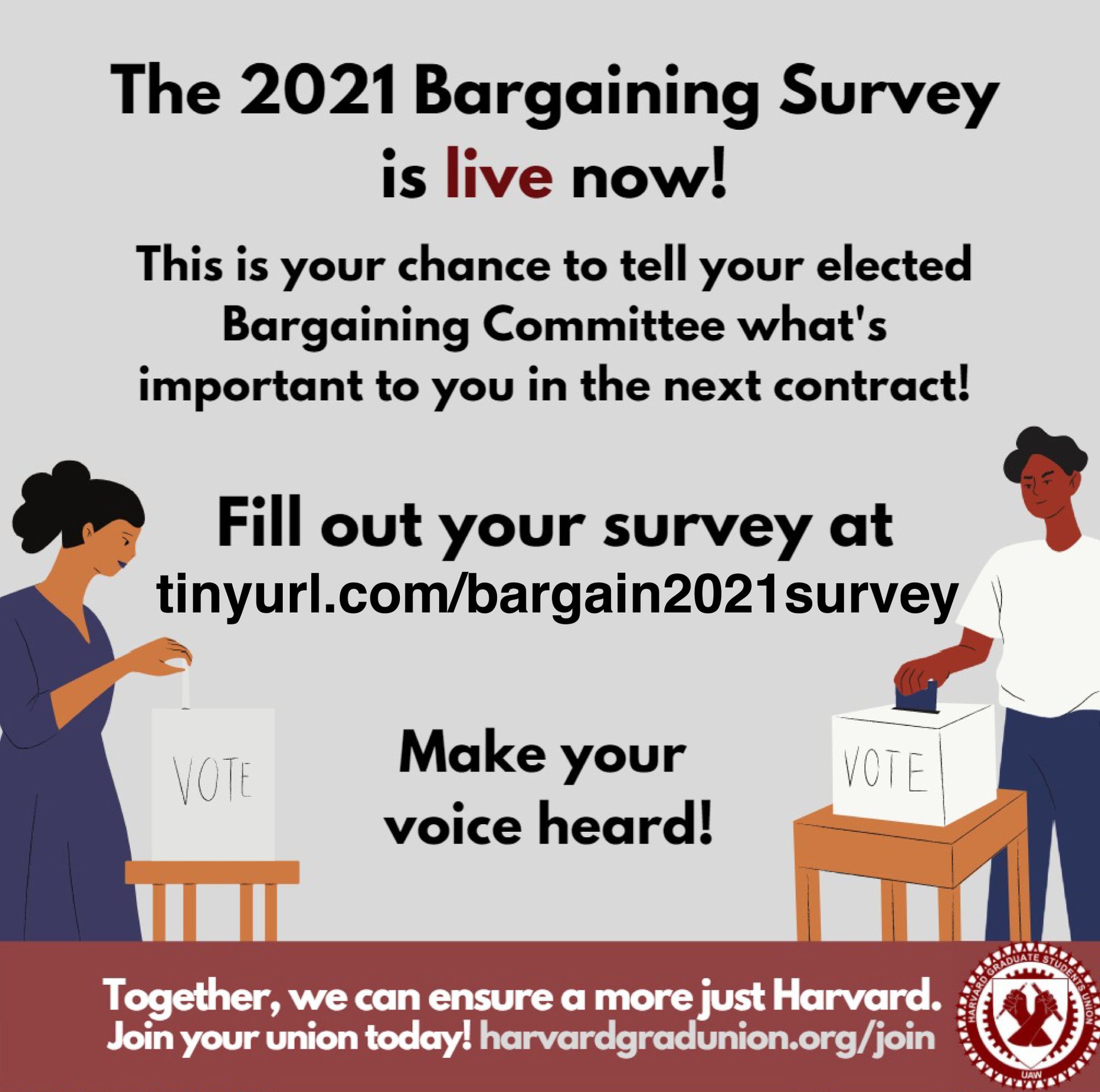Almost every union contract addresses wages and benefits. For many it’s a cornerstone issue. We already know that union members earn more money and have better benefits because of the power of collective bargaining. So how do unions determine what to propose during negotiations? Also, what is a fair contract with salary and benefits and how do we get there?
Information requests and member surveys
Submitting an information request to the company is one of the first steps in preparing to bargain. In unionized workplaces, employers are required to provide information relevant to terms and conditions of employment. A typical info request will include the salary of unit members and detailed explanations of existing benefits and policies, ensuring that union negotiators know the baseline of what is already provided to employees.
In addition to submitting an info request to management, the bargaining committee should distribute a bargaining survey to all members Thisusually happens online but it can also be a paper survey.
- Quantitative questions help the committee get a big picture of what the membership wants to address. Examples: “On a scale of 1-5, how satisfied are you with the current allocation of sick days?”, “What are your top three priorities to address in this contract?”
- Qualitative questions provide an important opportunity for members to articulate their experiences at work and can elevate issues and experiences that the bargaining committee may not be aware of (example: “Have you ever felt unsafe at work? If so, please elaborate.”)
The committee needs to know what to prioritize in order to advocate for the strongest possible contract. Here’s a good example of a bargaining survey from OPEIU.

Developing proposals (and counter proposals and counter counter proposals…)
Negotiators and union committee members analyze the full salary report for unit members in order to determine opening salary proposals. One method to determine salary minimums is to calculate the average of existing salaries by job title. That way, the initial proposed minimum is within the realm of what the company is already paying people while also accounting for outliers on the high and low end. Opening proposals are typically ambitious and leave room to negotiate/take things off the table.
Note on pay transparency: the information request is submitted by (and returned to) the lead negotiator, who is often paid union staff or outside counsel. Historically, negotiators and union staff have kept that information and only shared an anonymized salary report with unit members, including those on the committee. However, in the spirit of transparency and democratic decision-making, it can be useful to share detailed information (including each employee’s salary) with the bargaining committee. In these situations, it’s important that bargaining committee members take their role seriously and respect the confidentiality of unit members. It does not help build solidarity if bargaining committee members gossip about people’s salaries.
Some committees have gone even further, calling for full pay transparency across the unit. Ultimately, transparency helps workers. Part of being a unionized workplace is building a culture of honesty and accountability. But that doesn’t mean it’s never awkward. Solidarity isn’t always easy but it’s worth it. Don’t turn on each other - fight for more!
A fair union contract balances wages within the overall economic package; locking in current benefits - retirement, healthcare, reimbursements - and putting more money in workers’ pockets over time. Locking in healthcare costs (which rise on average 3-5% a year) could be the equivalent to a significant annual raise.
Can we afford it?
Salary and benefits are negotiated, which means the employer has to agree to the whole contract before adjustments can be implemented. If there are rumors that organizing or demanding raises could bankrupt a company, we want to try and push back on scarcity myths. Workers build the workplace and deserve their fair share.
In reality, a large corporation may have more to work with than a small non-profit...or not! That’s why it’s important to know your employer’s finances. But the information is not the easiest to access, so you should become an expert in taking note of management decisions: Have there been new executive level hires? What are the highest paid managers making? Has there been a recent increase or decrease in revenue? Bringing up your own financial analysis of your organization can be useful in a bargaining session but it can be even more useful as embarrassing public leverage. For example, in February 2021, an SEIU 32BJ union action highlighted a story of a hospital worker who received a $6 cafeteria gift card after contracting COVID...while the CEO got a $30 millon raise.

Costing out proposals
Though bosses may resist specific union proposals, in most scenarios it’s about the overall price tag. Part of the work of the union bargaining committee is to assess how to “divide up the pot” equitably. It’s not uncommon for contracts to specify a higher salary increase for employees at the lower end in order to ensure that everyone in the unit makes a living wage.
Here’s an example: Let’s say your unit has 13 members. In it, 10 people make $50,000 and 3 people make $40,000 so the total payroll is $620,000.
- Example (A): Propose a 5% annual increase for all 13 employees. Total cost: $31,000.
- Example (B): Propose a 4% increase for the 10 people making $50,000 (cost: $20,000) and a 9% increase for the 3 people at 40k (cost $10,800). Total cost: $30,800.
Proposal A and B cost roughly the same amount - $31,000 and $30,800 respectively - but will impact different members differently. Knowing your unit and the impact of your union proposals can help inform negotiating decisions and ensure that you are distributing resources as equitably as possible.
Know your member priorities
The bargaining committee should stay in touch with every member through mass emails, group meetings, and one-on-one conversations. The committee needs to know member priorities in order to advocate for the most important issues.
Committee members also need to know where the majority of the unit is at in order to determine how far the group can escalate. Even the most cordial negotiations will likely include significant disagreements around economic issues. An employer may resist agreeing to any kind of guaranteed salary increase in a contract, in which case it is up to the committee and the unit to build a plan to pressure the employer...or determine what terms they can live with. While the bargaining committee leads the negotiations, the entire unit ultimately votes yes or no, and a majority has to vote yes for the agreement to take effect.
Get your seat at the table
Organizing your workplace guarantees a seat at the table to negotiate salary and benefits. The more workers organize to build equitable workplaces, the better off we all are.



